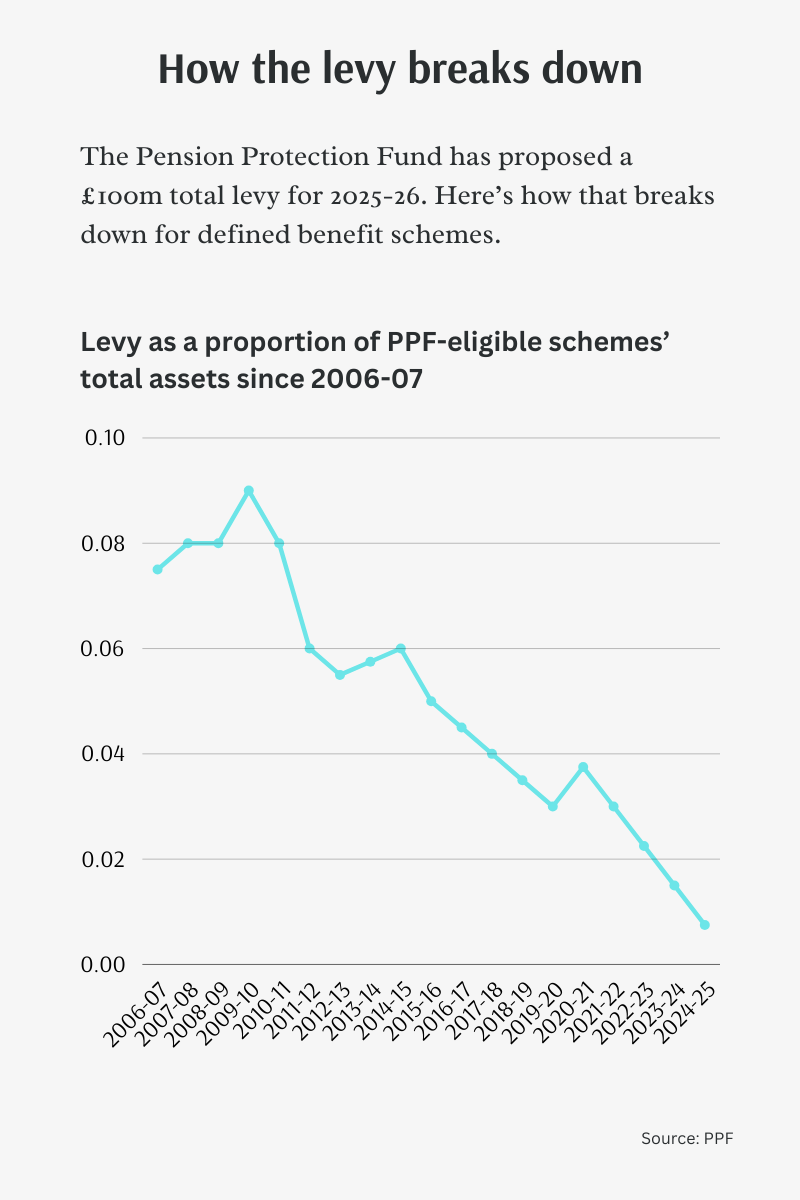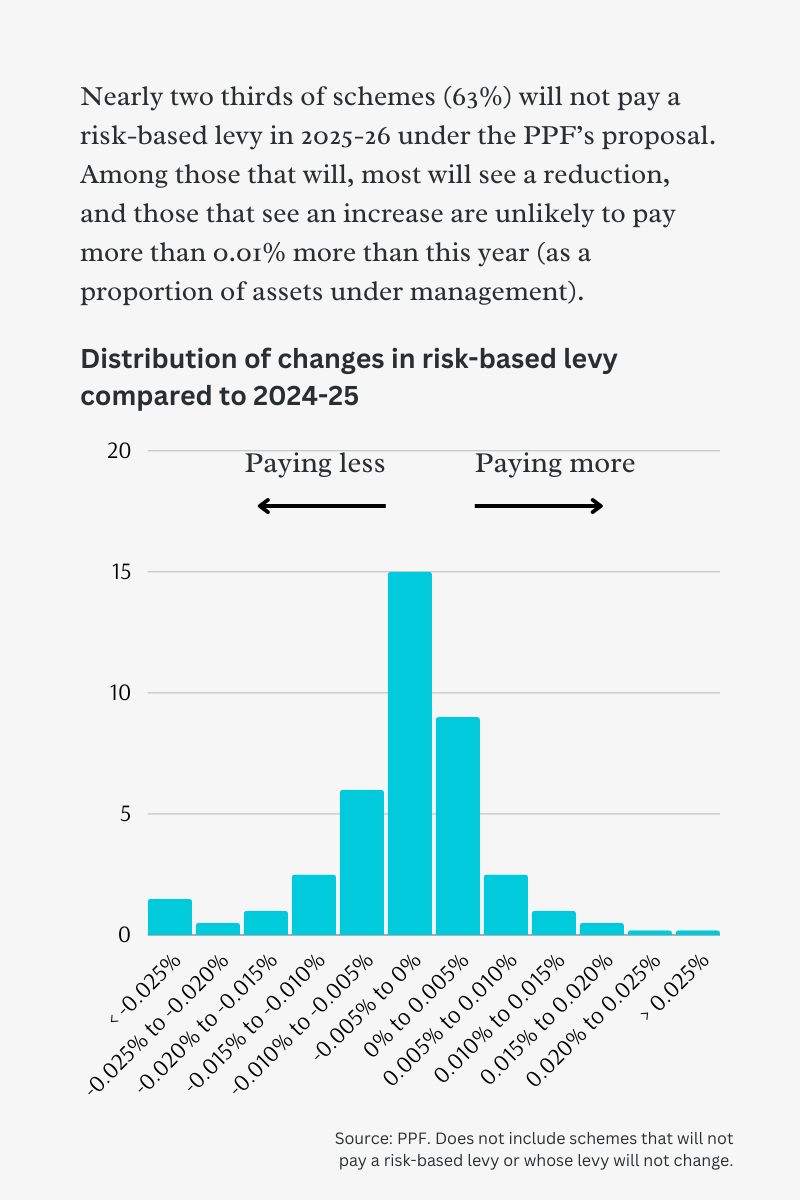Current rules mean the PPF cannot stop taking a levy without compromising its ability to raise capital in the future.
The lifeboat fund announced this week that it was consulting on a £100m levy for the 2025-26 financial year, the same level as for 2024-25 and the lowest it has ever been.
It is also seeking amendments to its rules to allow it to reduce the levy even further – potentially to zero – reflecting its strong funding position. The PPF reported a £12bn surplus in its most recent annual report to the end of March 2023.
Currently, the PPF is limited in how it can change the levy year on year to a maximum of 25% of the previous year’s total, meaning that if it reduces the total to zero it would not be able to increase it in future if necessary.
David Taylor, executive director and general counsel at the PPF, said the organisation would “continue to engage with the government on legislative changes to enable us to reduce the levy further and even to zero”.
“We will keep progress on this under review and not charge for longer than we need,” he said.
Former pensions minister Steve Webb, a partner at LCP, described the situation as “ludicrous” as it meant the PPF was unable to facilitate what would amount to a cost cut for DB schemes.
“A simple change to the law would allow the PPF to scrap its £100m levy for next year confident that if things deteriorated sharply it could always be reintroduced,” Webb said.
“With a [Pension Schemes] Bill set to go through parliament in the current session, it would be straightforward for the government to amend the law so that the levy could be further cut next year without undermining the financial stability of the PPF.”
Chris Ramsey, chair of the Society of Pension Professionals’ DB committee, echoed Webb’s sentiment and called for the amendment to be included in the Pension Schemes Bill.
“This would enable a more sensible levy policy going forward, that doesn’t result in such an unnecessary collection of pension scheme money,” he added.
The PPF levy for 2025-26



The PPF has launched a consultation on the 2025-26 levy, which is open for feedback until 23 October.
For most schemes, the risk-based levy payment will be “broadly the same” as for the current year. Of those that pay this levy, almost two thirds are expected to pay less.
Taylor said that proposed changes to the PPF’s levy calculation methodology would “help to maintain the pool of risk-based levy payers, thereby spreading the levy more reasonably”.
He added that the organisation had also implemented changes at the request of levy payers to make it easier for schemes to certify deficit reduction payments and incorporate full scheme buy-ins.






















